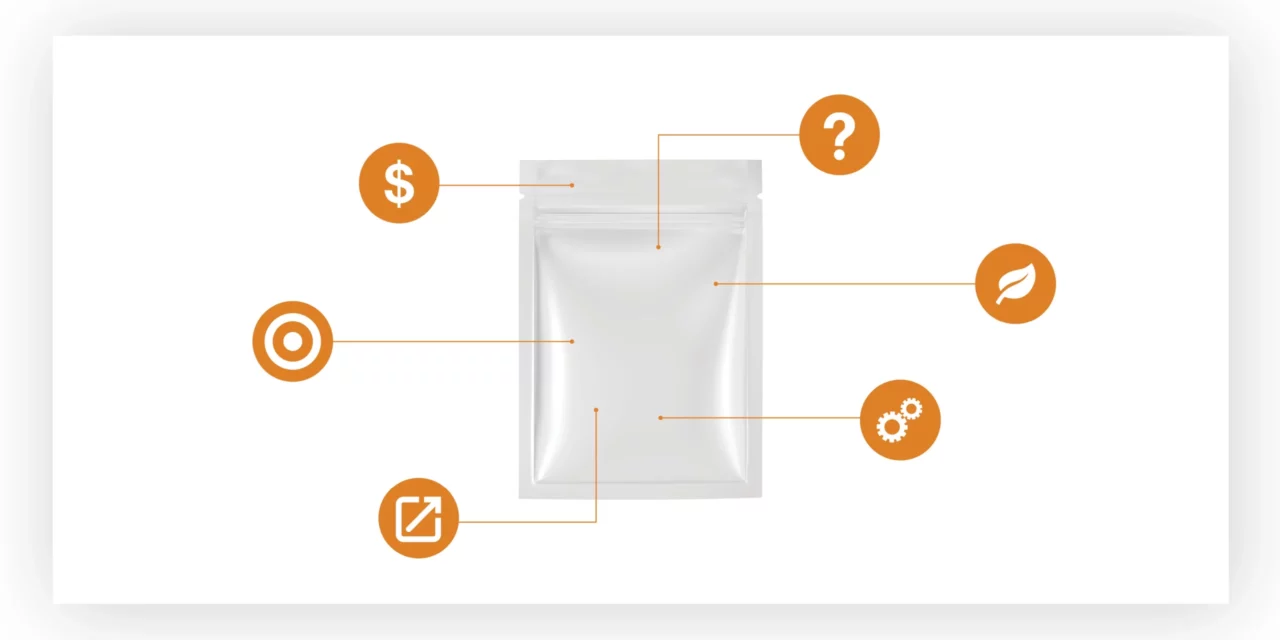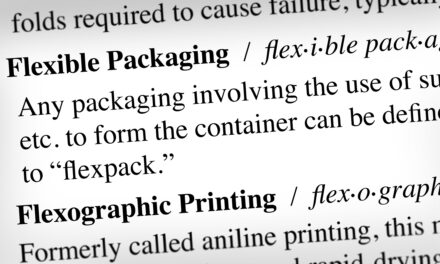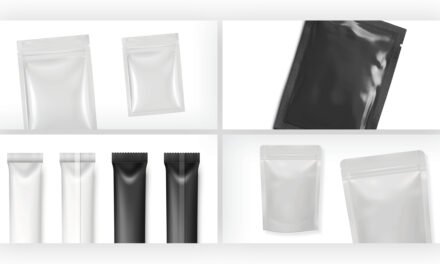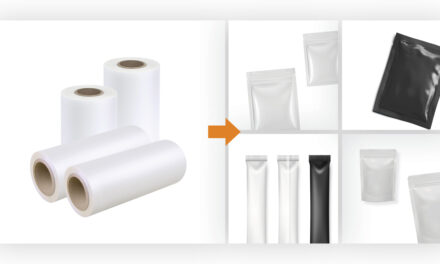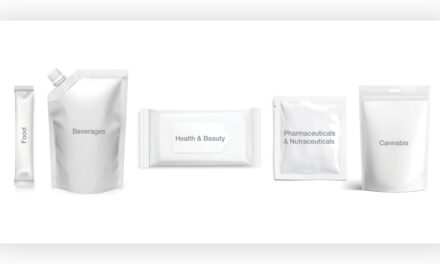HOW TO SELECT A FLEXIBLE PACKAGING CONVERTER AS A BRAND
In the modern world, it is no longer enough to simply create a quality product that consumers love. The way a product is packaged is becoming more and more important to consumers, brands, and regulating bodies alike. Increasing scrutiny is applied to everything from the materials used in packaging to the marketing claims made on it. On the other hand, brands must ensure they remain competitive by balancing low material costs, high margins, and skillful targeting of their market segment.
For all of these reasons, it is absolutely crucial for brands that utilize flexible packaging to partner with a trustworthy converter whose operations and goals align with their own. Certain factors, such as lead times and acceptable customer service, may immediately come to mind. However, there are many other things brands should take into account when deciding whether or not to move forward with a packaging producer.
1. What are their equipment capabilities?
In many ways, a flexible packaging operation is defined by the equipment in its facility. There are three main types of equipment brands should ask about when deciding if they should do business with a flex pack converter:
Presses
Does the converter use a conventional press or a digital press? Each type of press has its own benefits and drawbacks that will impact each brand differently.
Conventional presses, which include flexographic and rotogravure presses, can process huge volumes in a very short time; however, they typically incur longer lead times due to the complexity of pre-press logistics and planning. Converters who have a conventional press will likely be able to offer more flexibility regarding types of packaging and the construction of that packaging.
Digital presses are incredibly accurate and can turn a graphic file into a pallet of finished prints in a very short time frame, but they produce packaging with certain limitations that affect versatility and performance. They are typically best suited for shorter runs with higher margins.
Any option could be ideal depending on the brand, but in general, a rotogravure press is the most suitable option for the highest quality jobs, followed by the flexographic press and then digital technology. Be sure to find a converter whose capabilities align with your own, and don’t be afraid to ask questions about their printing process to gain a fuller understanding of their capabilities.
Embellishments
The equipment that makes certain value-add processes possible can be expensive, so not every converter will offer every value-add effect. Be sure to ask about the converter’s familiarity with foiling, spot varnishes, viewing windows, tear notches, and any other extra processes your packaging may need during any initial business discussions.
Fitments
Similar to embellishments, fitments typically require dedicated machines or modules and can be a pricey investment for a converter. Ask your potential partner if they have the ability to add elements such as zippers, valves, spouts, and other consumer-friendly components to packaging if your brand has a need for them.
2. What is their minimum order quantity?
Perhaps the most basic question on this list, a flexible packaging converter’s minimum order quantity is a straightforward way for a brand to determine compatibility. In fact, many converters will not even consider partnering with a brand with order volumes that fall outside their pre-determined range.
Larger converters will likely have high minimum order quantities to maximize the productivity of their presses and employees. These larger converters will likely turn away smaller brands simply because it does not make financial sense to let smaller jobs take up valuable space on the press when a larger, more profitable job might be edged out of the workflow.
On the other hand, some flex pack converters, such as those with digital presses, may specialize in smaller orders and refuse jobs that exceed their order limits. These restrictions may be due to equipment constraints or concerns about the lower margins that typically accompany high-volume jobs. Pushing the limitations of a converter’s output can result in extended lead times or poor quality control, leading to frustration for both the converter and the brand.
To ensure the brand/converter relationship remains positive, stress free, and productive in the long term, be sure to find a converter whose volume capabilities fit comfortably within your business’s needs. Brands experiencing high rates of growth may also need to verify that their converter’s upper range falls within their expected growth targets for the foreseeable future.
3. What packaging formats do they offer?
Flexible packaging comes in a wide variety of shapes, sizes, and formats, and a given converter rarely offers every existing iteration. Certain converters may even specialize in a specific format, such as stand-up pouches or stick packs, based on their equipment capabilities and target market.
One of the first questions to ask in an initial call or meeting is if the flex pack converter can provide the full range of packaging formats your business will need at an acceptable quality. A brand that markets its products as high end will need to confirm that the converter can not only produce the package but also produce it with consistently excellent results.
It is also important to consider a converter’s full product offerings even if your company does not have a current need for many of them. This information may affect your product development team’s willingness to trial new products and materials as having a reliable packaging vendor can greatly streamline the process. Even if a converter does not currently offer a packaging format your team is interested in trying out, many will be willing to explore new formats when asked.
If your brand lies on the more creative end of the packaging spectrum, be sure to find out if your converter has dedicated systems in place for integrating new packaging. Confirm that they have in-house research and development staff that can devote time to working with your team on creating packaging that meets your brand’s exact needs.
4. Are the structures they offer suitable for your target market?
While the form packaging takes is certainly important for consumer experience and marketing efforts, the internal structure of a package is far more important when it comes to consumer safety and abiding by legislative and regulatory requirements. Brands would be wise to thoroughly research federal and local laws that might impact the way they package their goods and, in turn, seek out flexible packaging converters who also understand these criteria.
Food safety and material handling certifications are of utmost importance for many types of products, so always be sure you fully understand where the converter’s materials are coming from and how each facility in their supply chain operates (including if the facilities have a food-safety certification). If you sell controlled substances, make sure the converter offers packaging that meets the proper requirements, such as child-proof packaging.
Consider also if the converter offers packaging with aesthetic qualities that will support your marketing efforts. Historically, flex pack converters have given little attention to specialty design elements, but it is becoming increasingly more common to find converters who utilize specialty finishes and value-add effects for marketing purposes.
If your brand has little need for specialty packaging, you may be able to find a converter that uses basic materials with the expectation of smaller margins. However, if you are a luxury brand or operate in a more niche market, it can be helpful to find converters who offer more creative solutions, such as a velvety soft-touch finish or eye-catching embellishments.
If you’d like to learn more about how flexible packaging is made, check out our blog post on the topic: How Is Flexible Packaging Made?
5. Do they offer enough flexibility to serve you long term?
The need for flexibility is closely intertwined with the concerns laid out in the previous two sections, but it is important to understand what factors might affect a converter’s ability to switch gears when needed. Most flexible packaging is made up of several individual layers that each serve a specific purpose.
Because this process requires converters to source materials from a variety of vendors, many smaller or newer converters will instead purchase pre-laminations, also called pre-lams, which are structures that have already been assembled in another facility. In these instances, the flexible packaging converter will have little control over the price, thickness, and construction of their packaging.
If your company wants to be highly involved in the engineering and design process to create personalized packaging solutions that meet specific criteria, seeking out a converter that creates structures in-house will prove to be highly beneficial. These converters will have in-house application engineers who understand how a structure can be altered to meet the goals of your brand without sacrificing safety or quality.
6. Do your sustainability goals align?
Sustainability is becoming more important to consumers and governing bodies alike, so having a solid grasp on a flexible packaging converter’s sustainability initiatives is crucial. If this is something central to your company’s goals or mission statement, request information about what steps the converter is taking regarding consumer social responsibility (CSR).
Consider the following questions:
- Do they offer sustainable materials that help reduce post-consumer waste or the amount of emissions produced in the manufacturing process?
- Have they taken any steps in their internal processes or systems to reduce their energy usage or find more mindful solutions?
- Do they carefully engineer their packaging structures to help minimize food waste?
- Have they made efforts to stay informed about the latest developments in sustainable packaging?
- Are they willing to share their insights and provide education about available solutions?
Brands that promise consumers some level of sustainability must accept accountability not only for the products they sell but also for the packaging that holds them. This means understanding the inner workings of vendors and the entire supply chain in order to be fully honest in any sustainability claims.
WANT GUIDANCE ABOUT HOW TO APPEAL TO BRANDS?
If you are a flexible packaging converter hoping to use this article as an educational resource, don’t hesitate to reach out to the Nobelus team through phone or email. Our in-house solutions experts have years of experience and insights about learning how to work with brands to find solutions that meet the needs of both parties. We can provide you with detailed guidance on food safety regulations, entering new markets, offering a wider range of packaging formats, and even deciding which type of press you should invest in based on your operation’s goals.

